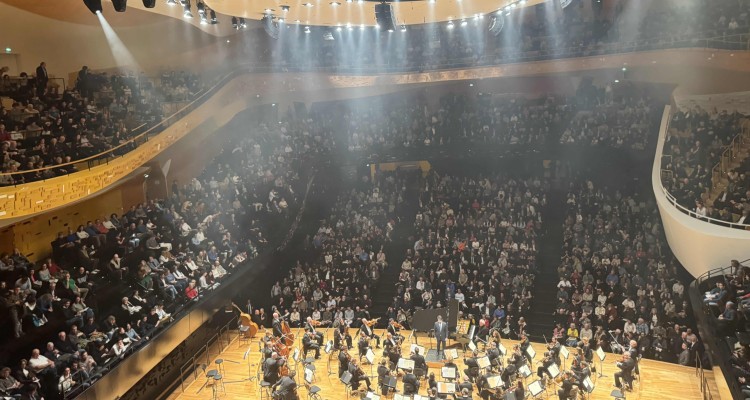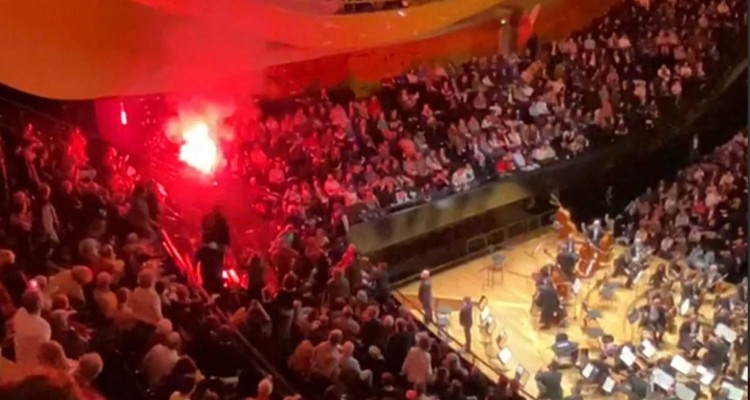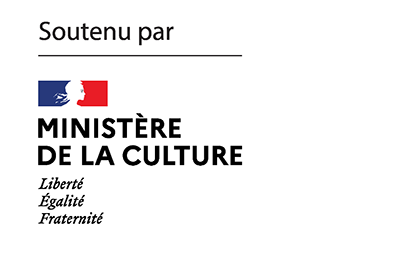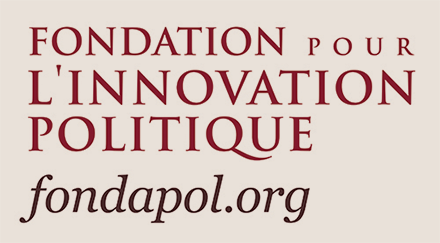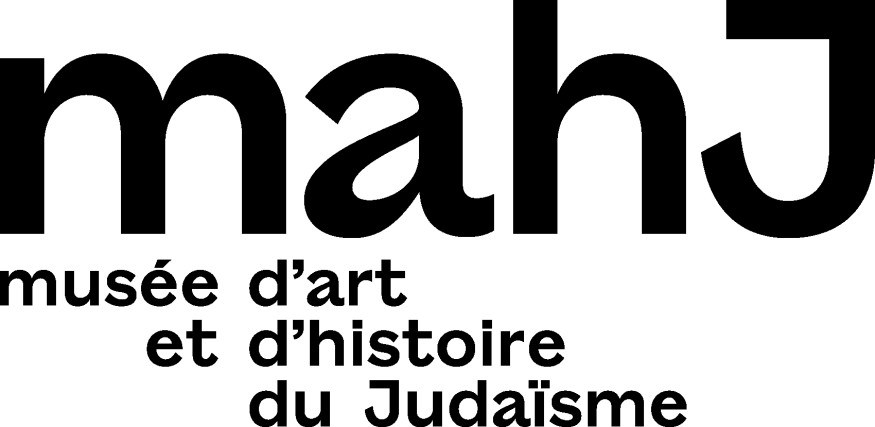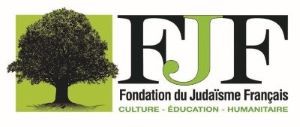In this text, Anne Simon examines the imagery conjured up by the massacres of 7 October: between the reference to the pogrom that was employed by many Jews to understand them, and the way in which they have been described by Hamas, i.e. as a flood. At the heart of this exploration is the motif of the ark, of a refuge that opens up the possibility of a future, but always runs the risk of proving more fragile than promised.
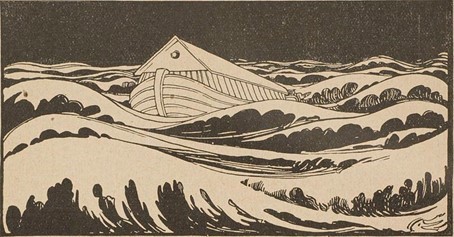
“The specter is called pogrom“.
Albert Londres,The Wandering Jew Has Arrived, 1930
“The fundamental cause of pogroms is the horror of the Jew. After that come the pretexts. There are many,” [1] wrote Albert Londres in his investigation of the Jewish condition for Le Petit Parisien in 1929. From England, his journey took him to Eastern Europe, where he was appalled to discover the appalling life of the ghettos and the scale of the pogroms suffered – both in terms of numbers of victims and atrocities. The great reporter is well known for his reports dedicated in particular to society’s outcasts: sex workers, convicts, madmen, Tour de France forced labor cyclists, overexploited African workers… With this new investigation, he follows the often bloody trail of the Jew who has wandered Europe for two millennia, right up to his return to Palestine: final questions prevent the book from closing, testifying to the uncertainty surrounding this “arrival”. A year later, in 1930, Albert Londres compiled his articles into a book of twenty-seven chapters. The ninth, “I Met the Wandering Jew”, ends with the latter’s departure, as he resumes his journey “with bent back”, climbing “an all-white hill”.[2]
The tenth chapter, entitled “The Specter”, can now begin.
Spectral return of the pogrom
The snow-covered road, where the shape of the Wandering Jew’s footsteps can be seen, is not empty: “Now a specter is blocking our path. It’s not white, it’s red”. This specter turns every Jew into a creature on the prowl, a “criminal” without crime, hunted by the “modern”[3] Russian avatar of long-term persecution.
That a reporter of Albert Londres’s stature should use fantasy to document his investigation may come as a surprise. This is because political lexicon and historical or ethnological causal studies miss the point, when it comes to probing a paradox that is multiplied and consistent: each pogrom, which can be dated, is part of history, while transcending its temporality. The desire to eliminate is in fact the object of an act that can be immediately related to the sordid pattern of repetition. For its perpetrators, it’s a matter of redeploying atrocities perpetrated according to centuries-old modus operandi, anticipated by skilfully and massively disseminated antisemitism stereotypes. For the victims, the pogrom reopens an individual and collective scar that crosses time. Every year, at Pesach, the threat of annihilation is the subject of a ritual song of warning and safeguard, Ve-hi che-amda – “This is the promise that has sustained us”, transmitted “from generation to generation” (dor va-dor).
My inquiry is not to investigate whether the event of October 7, 2023 is a pogrom in the historical, socio-cultural or legal senses, but to examine it as related to its characterization by Hamas: Amaliyyat Ṭūfān al-Aqṣā – “Operation Deluge of al-Aqsa”. As a specialist in literature, mythical imaginary, philosophy of affects and the sensible, I wish to follow this imposed motif to examine its resonance, at an archaic and embodied level, in a very large number of Jewish men and women. The psyche knows no time, or blurs its categorizations, which are themselves cultural and linguistic. A notion that emerged in the nineteenth century, linked to “violence emanating spontaneously from a population and more or less incited or tolerated by political authorities”[4], the pogrom, among other things because it involves the enjoyment of torture and murder, is nonetheless felt as a historical invariant. As Tal Bruttmann has reminded us, the operative structures of the attack of October 7, 2023 make it a specific event: it was meticulously programmed from the outside, and took place via an intrusion into a country with a national army. But the awareness that Jews constitute a tiny minority in relation to the regional and global population, combined with the fragile singularity of the State of Israel within the Middle East, lies at the heart of the fear of the country’s demise. Significantly, the notion of a vital “remnant” (sha’ar[5]) after radical erasure appears in the Flood episode, a “remnant” destined for a long posterity in Jewish hermeneutics, literature and politics.
“Pogrom” persists, spectrally, in expressing the unspeakable. The critical task will be, as quickly as possible, to emerge from this affective ahistoricism, so as to be able to resume political action with a view to the future, necessarily intertwined, of Israelis and Palestinians. What I would like to examine, however, is why, whatever their intellectual reaction to this event, so many Jewish men and women have placed October 7, 2023 in the bloody loop of the pogrom. Without this reliving of a re-ignited fatality, we can’t understand their psychic anchorage on that precise day, on those hours compulsively rolled up and down, on those images and cries that never cease to return in the depths of their restless sleep, in their most trivial acts, at the very heart of their alliances, loves and friendships.
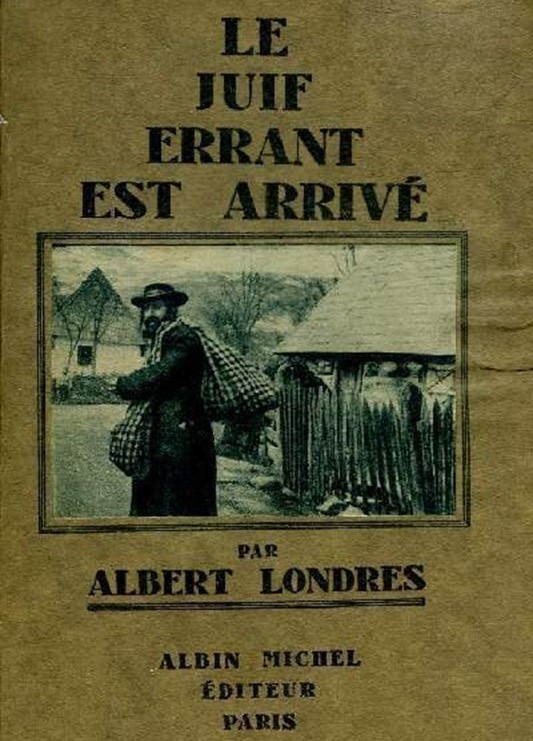
So, let’s return to Albert Londres who, in 1929, already seems to be describing this October 7, 2023:
“Pogroms have their date as well as wars. […]
When we study them closely, we notice that pogroms come in three forms: the bloodless form, the bloody form, the cruel and sadistic form.”[6]
The reporter makes a classification, knowing that the first form (“Jews found in streetcars are thrown to the ground, the streetcar running […]. This is what we call a moderate pogrom”), leads to the second (“we kill, we lynch […] blood floods the platforms”). And these two forms, because they are both logical and ontological stages based on an identical principle (“the horror of the Jew”), are part of the last, “the cruel and sadistic phase”:
“Everything is searched, right down to the cribs! […]
Children are tied to the warm corpses of their fathers. At the moment of rape, mothers and daughters are mixed in the same fury. Fifteen hundred killed between three and six in the afternoon.
[…] Jews are hanged by the hands, their flesh cut with sabres. The pieces that fall off are cooked. The heads are bowled with.
Mothers offered to save their children. The Cossacks would reply: “You’ve got to nip the kikes in the bud. And they’d gut the angels!”[7]
The sharp laconism, the use of the pronouns “we” or “they” that establish the torturers as a collective, the endless enumeration of exactions all serve to highlight the excessiveness of the crimes committed and the impossibility of arguing the reasons for them. A pogrom is always a milestone in dehumanization, affecting first and foremost the perpetrator or accomplice, in a process of burying the human in himself. We can, and must, trace the extreme geostrategic complexity against which the pogrom of October 7, 2023 is set; as an event with two incomposable faces, indissociably historical and ahistorical, cruelly dated and durably encysted, it remains fundamentally unsubsumable under any cause whatsoever.
But what was replayed on the stage of history on October 7, 2023?
“Operation Flood of al-Aqsa”: playing God
On that day, every creature on Israel’s internationally recognized soil – the vast majority of Jews committed to peace, but also Israeli Arabs, foreigners and even, significantly, pets – became a target with the generic name “Jew”, including its variation “Zionist”.
A myth has been re-enacted, proving that the imaginary is an integral part of the real, and even more so, that it produces and institutes history.
What I and others call the “Pogrom of October 7, 2023”, to emphasize its Jewish historical roots and the psychic rupture it constitutes in the Israeli and diasporic imaginary of the history of this country of refuge, the State of Israel, is generally referred to by the mainstream media as the “Massacre(s) of October 7”. However, when planning it, Hamas named it “Operation Flood of al-Aqsa” (Amaliyyat Ṭūfān al-Aqṣā): claiming to be radically religious, the name cannot be related to an anti-colonialist struggle.
According to Jonas Sibony, a specialist in Arabic and Hebrew, the word amaliyya is built on the Arabic root ˁML, which evokes the ideas of “work”, “work”, “labor”, “know-how”: as in French, the term refers to both military and surgical operations. The word is sometimes used by certain journalists or political leaders in a deliberately vague way: the Tunisian president, for example, spoke of Amaliyyat Djerba (“the Djerba operation”) to refer to the very real attack on the Ghriba synagogue on May 10, 2023. This neutral, factual use therefore refers to “a semantic and lexical struggle” orienting the perception of the event.
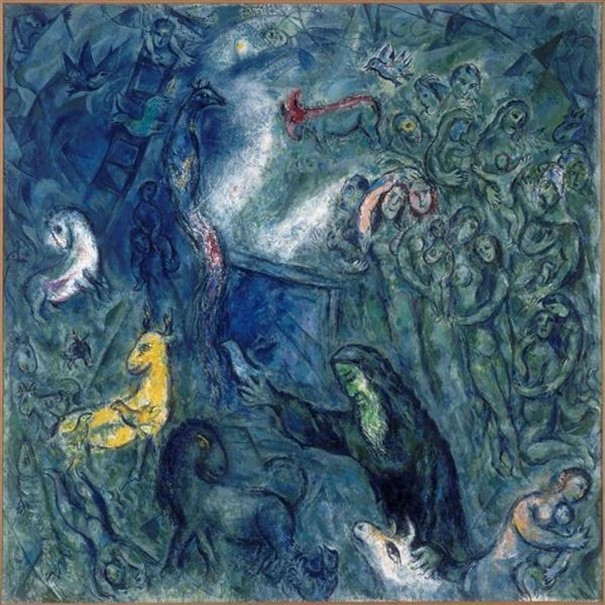
Ṭūfān is Arabic for flood. It has a proper noun value when it refers to the biblical Deluge, but is also used for “flood”, “inundation”, “flood”. The word is built on the ṬWF root, which is rare but scattered in many terms with similar roots in different Semitic languages: it refers to “drop”, “torrent”, “excess”, “skimming the surface of the water”, “jumping suddenly” or “floating”. In short, it’s the idea of sudden, massive “submersion” that prevails.
Finally, the word aqsa is first and foremost a superlative – “extreme”, “at the end of”, “at the bottom of” – built on the root QṢY. (“the end, “the extremity”). The expression Al-Masjid Al-Aqsa means “the farthest Mosque”, but refers less to the al-Aqsa Mosque (Jerusalem’s largest) than to the Esplanade of the Mosques, which also functions as a synonym for Jerusalem. The fact that in French we refer to the “Déluge d’al-Aqsa”, without translation, and not to the “déluge de l’extrémité” (deluge of the end), reflects the presence of this symbolic proper noun.
Jonas Sibony’s lexical clarifications enable us to grasp more fully the political-theological scale of the pogrom (around one thousand two hundred victims in a few hours, often very difficult to identify, not counting the wounded and hostages still being held). In carrying out an operation superlative in horror and purpose, the members of Hamas, Islamic Jihad and a number of Palestinian civilians who supported them sent out a message: the global project to reconquer “Jerusalem” – the Jewish state – metonymically involves surgery to attack the very body of Israeli youth, which is seen as “sick”. This effective dismemberment of the national body is symbolically founded on a mortifying rhetoric, in which the Flood, the radical obliteration effected by the divinity on a world in the grip of a total inversion of values, is this time assumed by humans annexing to their project of death a religion, Islam, and the name of a God, invoked in the howls. In so doing, they have defiled both. As Abdennour Bidar reminds us, along with others such as Dominique Eddé and Elias Sanbar, by claiming to “serve” Islam, “they are murdering it”[8]. My comments on the Islamist dimension of the pogrom of October 7, 2023 would be indecent without recalling that an illegitimate interpretation of Judaism was mobilized to justify the colonial stranglehold on the West Bank, and that the massacres were instrumentalized to justify, in the name of “Greater Israel”, iniquitous killings of Palestinians or violent expulsions of Bedouins from their homes.
Biblical Mabul: back to tohu-bohu
A detour through the episode of Noah’s Ark in the Torah, as well as certain Hebrew commentaries and Jewish literary texts, will shed some light on the issues at stake in the “Flood of al-Aqsa”.
Each week, a section (Parasha) of the Torah is read. At the end of the first, Parashat Bereshit, which begins with the Creation of the world, the generation of corruption is unleashed; this section concludes with the figure of Noah, who finds “grace in the eyes of the Lord”[9]. This is followed by Parashat Noah, which recounts the Flood, Noah’s Ark and God’s promise to all the survivors – human and animal – that the Flood would never be used again[10]. History is then placed in the hands of humans.
No understanding of the biblical Flood is possible without reference to the 11th-century commentator Rashi. Relying on the root YBL of the Hebrew word mabbūl, he links it to other terms that refer to the ideas of total reversal, dissolution and eradication of a world already turned upside down, since it functioned in reverse to elementary ethical values:
“The word mabul (“flood”: מַבּוּל) contains the idea of “destroying” everything (bila: בִּלָּה), “upsetting” everything (bilbél: בִּלְבֵּל), and deporting everything (hovil: הוֹבִיל) from top to bottom. This is the meaning of the word tufna, used in the Targum Onkelos. The flood submerged everything.”[11]
Targum Onkelos is an Aramaic translation-commentary of the Torah, whose term for the Flood, ṭūfnā, is close to Arabic ṭūfān and Hebrew šiṭṭāfōn (“flood”). This Flood is decided by God, who regrets having created humans: through their penchant for corruption and deceit, they prevent any trust and therefore any bond, on a cosmic as well as a collective level. He then “wipes out” almost all the living, and returns to the tohu va-bohu – tohu-bohu which designates the primordial desolation and chaos of the very beginning of Creation[12]. As Bernard Maruani points out, the “confusion” and “involution of creation” caused by the Flood are a response to those perpetrated by the pre-Diluvian generation.[13]
In Biblical Hebrew, ḥamās (חָמָס)[14], can mean “violence”, “evil”, “insult”, “false”, “impostor”, “theft”, “plunder”; Jonas Sibony points out to me that it has retained its meanings of “evil” and “theft” in modern Hebrew. This term cruelly beckons to the Arabic term “Hamas” (acronym of Ḥarakat al-Muqāwama al-iSlamiyya, “Islamic Resistance Movement”), which literally means “zeal”, “fervor”, “exaltation”. In a reversal of the biblical text and a hyperbolic appropriation of divine powers, Hamas took it upon itself to embody the inversion of its own values by projecting them onto the dancing “generation” and the peaceful population of the kibbutzim.
As for the ark itself, an infinite subject, to understand its remanent role in the pogrom of October 7, 2023, we should remember that it takes on different values, linked in particular to the Hebrew name that designates it: teva ( תֵּבָה, not to be confused with ṭevaˁ, טבע, meaning “nature”).
First and foremost, it’s a precarious “crate”, an uncertain refuge in times of vital emergency for a collective – or an individual embodying its values. The only passage in the Torah where the word teva is used again is the one in which Yochebed places his son Moses in a fragile but life-saving reed “cradle”[15] on tumultuous waters, to save him from Pharaoh’s massacre of the first-born. If we remember, moreover, that the Flood itself lasted forty days, the matricial function of the ark is reinforced: according to Rashi, this corresponds to the time deemed necessary for the embryo to take shape.
The Ark is also linked to language and books. Firstly, because according to various esoteric sources, including the Zohar, it contains the book of wisdom given by the angel Raziel to Adam; containing all celestial and terrestrial knowledge, it was passed down from generation to generation to Noah, then to Solomon who built the Temple. And there’s more: teva refers not only to the crate or survival basket, but also to the “word”. This meaning is reinforced by the spatial measurements of the ark, since their notation in Hebrew, according to the 16th/17th-century commentator Isaiah Horowitz, is by three letters of the alefbet, which spell out the word LaSHoN: “language” – as a carnal organ, the language of a country, and language, including poetic language. For Marc-Alain Ouaknin, we’re dealing with a “word” that takes us into the structures of a “language”[16]. Finally, the linguistic anchoring of teva is also found in ritual: teva designates the “lectern” on which the Torah is placed for reading in the synagogue. The ark-teva is thus fundamentally linked to the constitutive and interwoven markers of Judaism: the absolute necessity of a refuge; the story of the survival of humanity (Noah) and of the Jewish people (Moses); language; the founding Book, guarantor of a community.
Shipwrecked arks: from cache to womb
The two-leaf narrative of the Bible – Flood and Ark – is psychologically remobilized when the Jews are prey to the intention of extermination, or its implementation. During the Second World War, Leïb Rochman (1918-1978) managed to escape from the Mińsk Mazowiecki ghetto, hiding for a year and a half with his wife and three other young family members, all under the age of thirty, in appalling “caches” (to use Christophe Boltanski’s term). Trapped between two walls or under a floorboard, suffocating in a chicken coop, threatened with drowning in the spongy basement of a barn, but also with burning shells that remind them that the waters of the Deluge are sulfur-burning waters, they are transformed into hybrid beings made of flesh, earth and water[17], with their integrity dissolved: “Are we on an ark? The Flood is sweeping away the walls of our hiding place. Every hour, we are forced to empty dozens of buckets”[18].

In Der Mabl[19], Leïb Rochman’s last book, the radical dissolution of the Flood once again reaches all areas of reality. The only hope, in a vital desire bordering on madness, is to sow for the future; but, torn apart in the span of a disaster of cosmic proportions that touches the most intimate, women with vulnerable arches and bellies struggle to form young, to give birth, to have viable children: the Flood corrodes the sweet, carnal, loving duration of gestation as well as that of giving birth – a world turned to ashes. Only the executioners, hilarious, are brimming with life. In With Blind Steps across the Earth (À pas aveugles de par le monde), the filthy “Austrian toy dealer” returned from the “Plains” (the valleys of bones and ashes that are the sites of the Holocaust) dominating: There, he raped young Jewish women, or watched them die, to desecrate their naked corpses, “twisted in monstrous cramps”; there, he “strangled with his big red hands the white necks of little children”, whose toys he then collected, toys that could be heard “singing in Yiddish” at night[20].
Decades later, in his narrative investigation The Lost: A Search for Six of Six Million, Daniel Mendelsohn entitled his third part “Noah, or Total Annihilation”. Here, the writer, via Rashi and the American commentator Richard Friedman, describes the widespread “childlike helplessness“, and deploys the image of the ark, of survival or death, in all its forms: false partitions, underground hiding places in a forest, “dark, sealed compartments in which the occupants could only listen and hope“, and, finally, leaded wagons and gas chambers – “They were also boxes. They were also arches”[21]. Survival arches are always liable to be transformed into anti-arches, through failure or diversion from their original function. On the other hand, if none of the meanings of the word designating the Hebrew ark refers to death (other than to avoid it), the “box” schema can always return, in its hyperbolic version: definitively hermetic. The Encyclopædia Judaïca thus hesitates over the origin of the word teva, possibly linking it to the ancient Egyptian db’t meaning “sanctuary” but also “sarcophagus”, or to tbt meaning “chest”.
“History repeats itself”, explained Daniel Mendelsohn in July 2022, reassuringly thinking of Israel as “the safe place for Jews”. Even less bearable, then, are the temporal superimpositions that inscribe October 7 in traumatic repetition. The differences in socio-historical situations, far from dissolving it, play into its terrible cogs. In The Lost: A Search for Six of Six Million, the writer set out to reconstitute the course of time from a Hebraic point of view: since the first exterminatory Aktion unleashed against the Jews of Bolechow took place on Tuesday and Wednesday, October 28 and 29, 1941, it is “probable that the last Parashah that many of the town’s Jews heard was Noah, the story of the divinely ordained extermination“[22]. On Saturday, October 7, 2023, Israeli and worldwide synagogues celebrate Simchat Torah, “The Joy of Torah”… A week after the pogrom, Parashat Bereshit is read, “the magnificent and terrifying arc from inspired creation to absolute annihilation“[23], announced by God. Finally, on Saturday October 21, 2023, as the list of arks that were powerless to save grows longer (country, kibbutz, house, bed, vault, car, under a bush, arms of fathers and mothers), it’s Parashat Noah that is commented on by all the rabbis – from the most orthodox to the most liberal.[24]
What has been swept away is the vital, carnal assurance of a country-arch. And with it, in spite of ourselves and momentarily, the path to the other has been blocked.
Arches within arches: nests and broods
On October 7, 2023, the tiny cells of this very small Ark that is Israel, the smallest hiding places, from a window sill where a baby is placed in the hope that it will escape the extermination of its parents, to family vaults blown up and invested for rape and mutilation, were places of absolute peril. The shelters in the National Shelter failed in their very essence.
Remember that in the Torah, the Flood lasts forty days, the time it takes for an embryo to form. The construction of the ark also takes us back to gestation. In particular, there is mention of qinim, often translated as “cells” or “compartments” into which the eight humans and animals are divided, species by species. But the term qen (קֵן) in Hebrew also means “nest”: in this protective, carnal, plastic matrix, in this dormancy too, difficulty is momentarily abolished. Yet during the pogrom of October 7, 2023, the infinitely fragile sexes of young women, breasts made for breastfeeding or the caress of love, were the object of unheard-of exactions, and obscene parades that soiled the rampaging crowd far more than the bodies on display. The fact that men, too, were subjected to atrocious sexual mutilation is intended to convey the message, typical of a genocidal intent, of the death of the very possibility of begetting. Leïb Rochman never ceases to return to this point in his work: prevented or violated gestation affects the Jewish people, so small in number, at its most nodal, which for almost two millennia has had to build itself not in space, but in time.
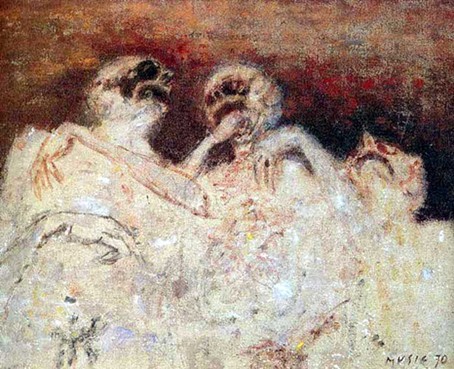
A little girl has just been named “Ṭūfān al-Aqṣā” by her parents[25], avowed supporters of Hamas, in the Balata camp on the West Bank, where misery vies with inter-factional rifts, the brutality of Israeli control and the exaltation of a murderous Islamism. It is precisely this reversal willed by the accomplices of terrorism, this mabbūl consisting in asserting that “Ṭūfān al-Aqṣā” designates Palestinian identity, that we must counter more than ever. To do this, Palestinians will have to reject the presence of Hamas and its hostages, including the very young, among their own children – some are doing so, in the silence imposed by the risks involved. The Jews will also have to look into the cradle-arches that exploded with the shield-houses of the tunnels. Mutual, attentive recognition of what, in bodies and souls, has been radically damaged, will be necessary to build the future. Moses, the hidden child, was placed in a teva by an Israelite mother, taken in by an Egyptian mother, and brought up by both[26]: words that are difficult to read today, on the verge of insensitivity, but which we must gently grasp, out of the troubled waters of our present.
Invoking the Flood to indicate the future, basing it on a pogrom, is a mortifying attack on language.
All the more reason to document and write: language is part of action, and helps to prepare it. For Jews, this activity has long had a name: Black Book.
It rhymes with Memory, and with History.[27]
October 7, 2023: Zachor.
Anne Simon
Anne Simon is a specialist in literary studies and philosophy. Her current work focuses on contemporary revitalizations of the Flood and the Ark. Her publications include ‘Une bête entre les lignes. Essai de zoopoétique’, Wildproject, 2021; ‘La Rumeur des distances traversées. Proust, une esthétique de la surimpression’, Classiques Garnier, 2018; ‘Trafics de Proust. Merleau-Ponty, Sartre, Deleuze, Barthes’, Hermann, 2016; Proust ou le réel retrouvé. Le sensible et son expression in ‘À la recherche du temps perdu’, PUF, 2000.
Notes
| 1 | Albert Londres, Le Juif errant est arrivé (The Wandering Jew Has Arrived) [Paris, Albin Michel, 1930], La Bibliothèque électronique du Québec, “Classiques du 20e siècle”, pp. 129-130. |
| 2 | Ibid., p. 118. |
| 3 | Ibid. p. 119 for all quotations. |
| 4 | Danny Trom, interview by Thomas Mahler, L’Express, November 9, 2023. |
| 5 | Genesis/Noa’h 7:23 (Sefarim, Hebrew Bible in rabbinic translation; commentaries by Rashi translated by Jacques Kohn: https://www.sefarim.fr/). Overall, I opt for a phonetic legibility of the Hebrew and Arabic (except for quotations), not for a transcription according to the rules of the art. |
| 6 | Le Juif errant est arrivé, éd. cit., pp. 120-121. |
| 7 | Ibid. p. 127-128; p. 121-126 for the preceding quotations. |
| 8 | Opinion column by Abdennour Bidar, Le Monde, October 13, 2023. Cf. also Dominique Eddé, “Le ‘nous contre eux’ signe fatalement le début de l’obscurantisme et de la cécité”, Le Monde, October 31, 2023, and Elias Sambar, L’invité du 8h20, France Inter, December 15, 2023. |
| 9 | Genesis/Bereshit 6:9 (Sefarim, Hebrew Bible in rabbinic translation; commentary by Rashi translated by Jacques Kohn). The Christian division into chapters does not correspond to the Massoretic division into parashiot. |
| 10 | Parashat Noah continues with Noah’s inebriation, the Tower of Babel and the childbirth of Noah’s sons, until Genesis 11:32. |
| 11 | Genesis/Noah 6:17. |
| 12 | Genesis/Bereshit 1:2. Genesis/Bereshit 6:7 for “I will wipe out”. |
| 13 | Midrash Rabba, Genesis, t. I, translated from the Hebrew by Bernard Maruani and Albert Cohen-Arazi, Lagrasse, Éditions Verdier, 1987, n. 7, p. 277 and n. 3, p. 298. |
| 14 | Genesis/Noah 3:11. |
| 15 | Exodus/Shemot 2:3. |
| 16 | Marc-Alain Ouaknin, Zeugma. Mémoire biblique et déluges contemporains, Paris, Seuil, 2013, p. 263-264. |
| 17 | Leïb Rochman, Journal 1943-1944 [Un in dayn blut zolstu lebn: “Et dans ton sang tu vivras”, 1961], translated from Yiddish by Isabelle Rozenbaumas, Paris, Calmann-Lévy / Mémorial de la Shoah, 2017, p. 504-507. |
| 18, 21 | Ibid., p. 502. |
| 19 | Leïb Rochman, Le Déluge [Der Mabl, 1978], translated from Yiddish by Rachel Ertel, Paris, Buchet-Chastel, 2017. |
| 20 | Leïb Rochman, À pas aveugles de par le monde [Mit Blindè trit iber der erd, 1968], translated by Rachel Ertel, Paris, Denoël, 2012, pp. 484, 551, 573 and 571. |
| 22 | Ibid., p. 111. |
| 23 | Daniel Mendelsohn, ibid. |
| 24 | Listen, for example, to Delphine Horvilleur’s commentary. |
| 25 | Report by Hugues Maillot, Le Figaro, November 26, 2023. |
| 26 | Exodus/Shemot 2:2-9. |
| 27 | Translated from French: Livre noir. Il rime avec Mémoire, et avec Histoire. |


